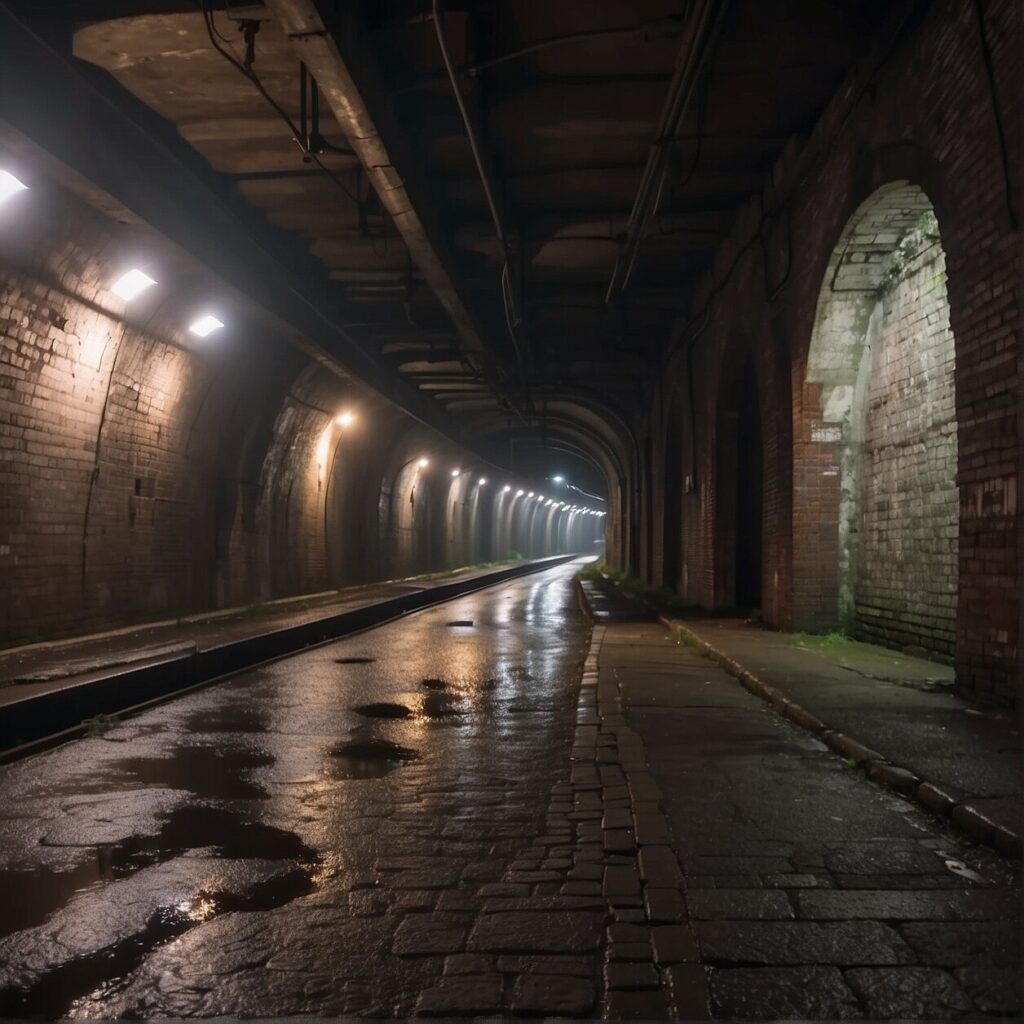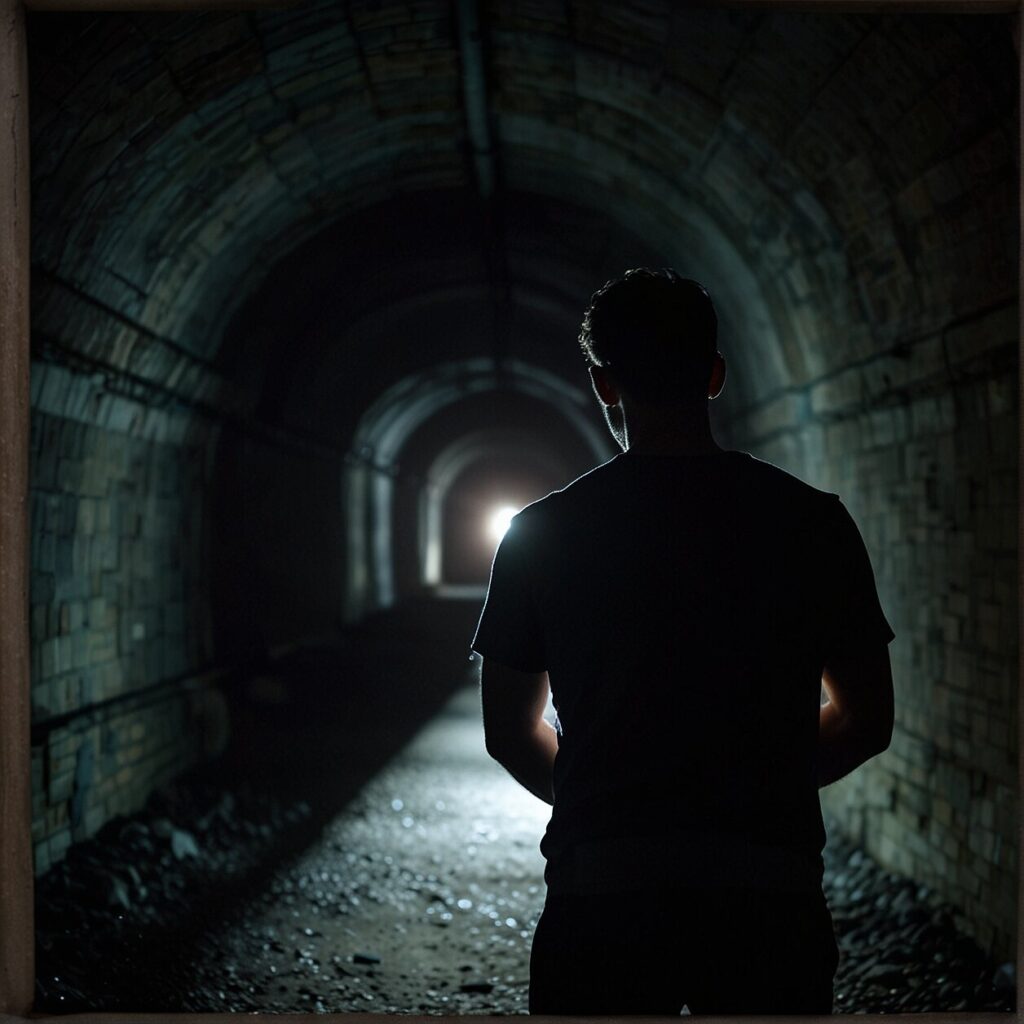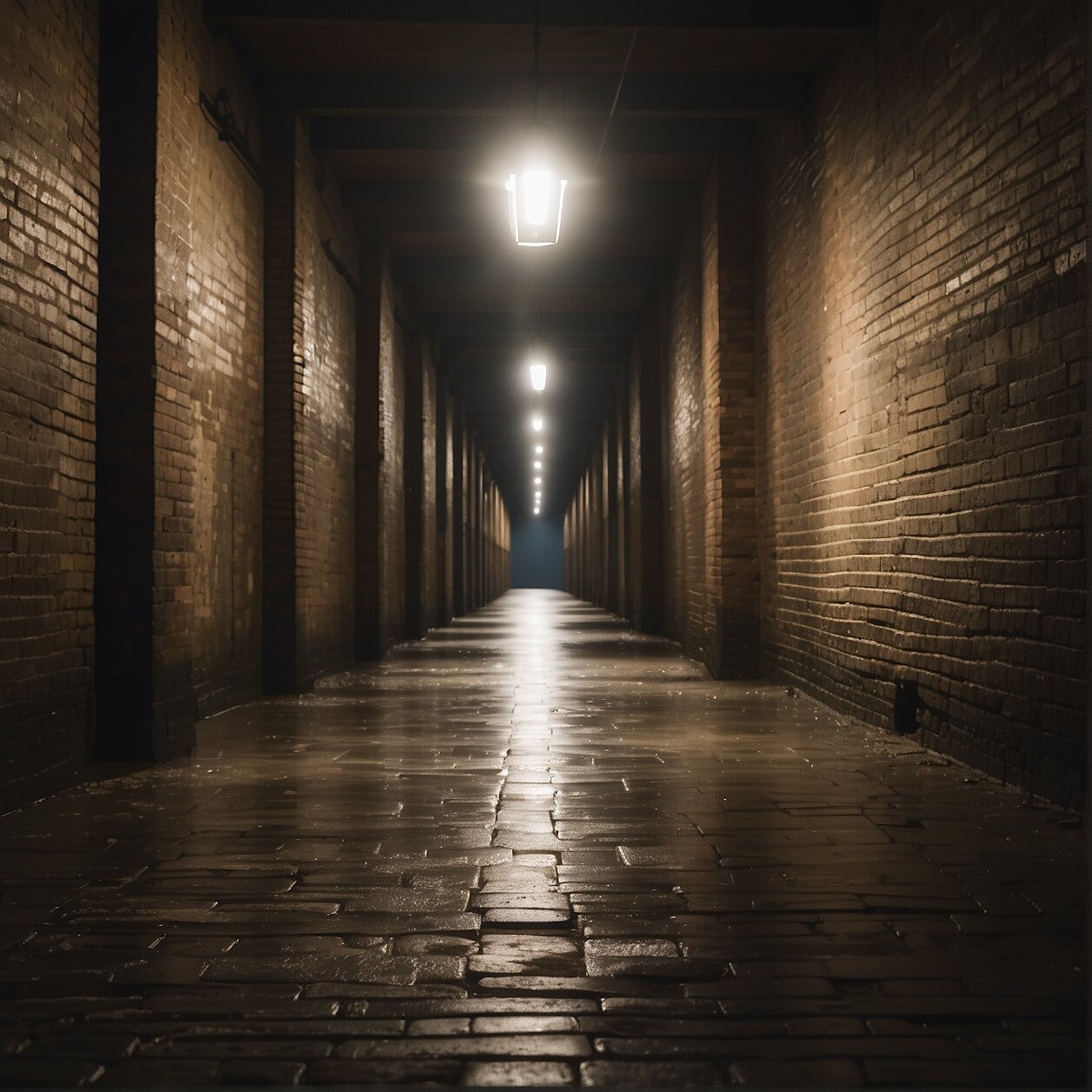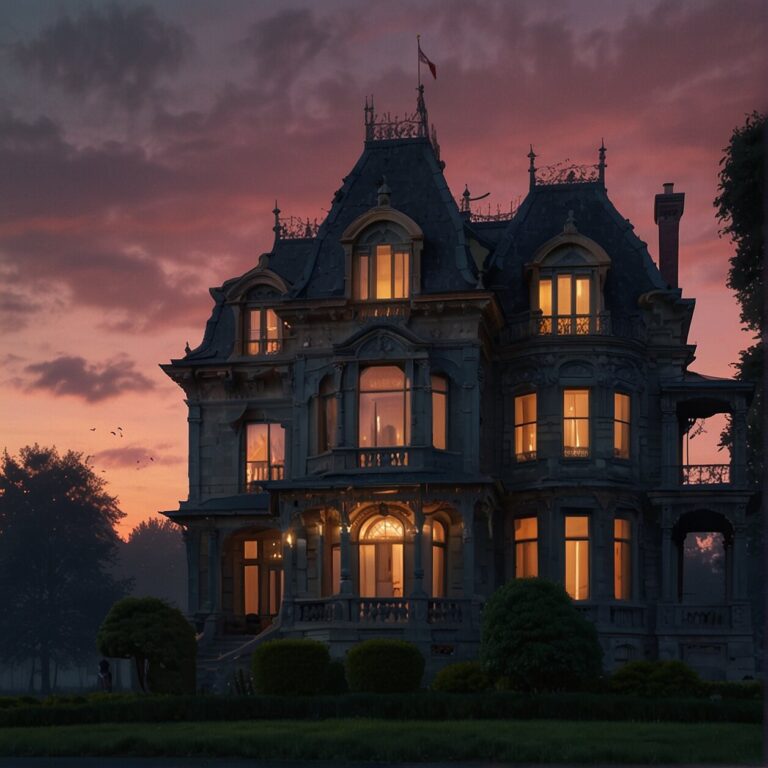Unveiling the Underground Tunnels of Portland
Welcome, dear readers, to a nook of history hidden beneath the bustling city life of Portland – the Shanghai Tunnels. These seemingly endless corridors whisper tales of a period steeped in intrigue and mystery, quietly echoing under our feet.
Imagine this: It’s the late 19th century. The air is thick with foggy uncertainty. You’re at ground level of the ‘Old Portland’, a city abuzz with magically-lit streets, bustling saloons, and an ever-thriving waterfront. Beneath you though, there’s a whole different world. These underground channels, commonly referred to as the Shanghai Tunnels, served an array of clandestine uses. But what were they exactly? What is the truth behind their infamous reputation? And why do they continue to hand down ghost stories generation after generation?
“The Shanghai Tunnels are a labyrinth of tunnels, leading the inquisitive mind through a journey into the Portland of yore. We’re inviting you to uncover its secrets, discover its myths, and in the process, be part of its unique heritage.”
Together, we’ll be diving headfirst into the intriguing stories surrounding these legendary tunnels. We’ll unravel their past, trace their present, all while opening doors to the hidden chapters of Portland’s history. Are you ready to explore the unseen?
The Mysterious Beginnings of Portland’s Shanghai Tunnels
As the ebb and flow of history washed over Portland, Oregon, a hidden infrastructure quietly developed beneath its bustling streets and buildings: the Shanghai Tunnels. Also known as the Old Portland Underground, these clandestine passageways paint a complex tableau of the city’s past, influenced as much by necessity as by ne’er-do-well deeds.
Born as a functional solution, these underground tunnels were originally designed to connect the basements of bars and hotels to the waterfront docks. This expedited the transport of goods, avoiding the crowded streets above and hastening the city’s industrial progress. Yet, this utilitarian framework soon morphed into a darker design.
Portland, in the early 1900s, was notorious for the infamous practice of ‘Shanghaiing’ – a euphemism for human trafficking. Vulnerable victims, often incapacitated with substances, were whisked away through these tunnels, only to find themselves aboard vessels bound for exotic and distant lands. As captives, they were forced into servitude, their freedom lost amidst the labyrinth of the Shanghai Tunnels.
Today, these winding passageways linking Portland’s Old Town to the central downtown area still exist, bearing mute testament to a shadowy chapter of the city’s history. The Tunnels serve as a poignant reminder of the city’s dark underbelly, its secrets buried deep but not wholly forgotten.
Unraveling the Shanghai Tunnels: Truth or Myth?
You might be wondering, “What’s the truth behind the Shanghai Tunnels?” The question has several facets, so let’s dig into it.
There’s no doubt that the Shanghai Tunnels, also known as the Old Portland Underground, exist. This network of passageways was extensively used from the mid-19th century to the early 1940s beneath the streets and buildings of the Portland waterfront.
As for the infamous stories of shanghaiing, that’s where things get complicated. While many believe that unsuspecting men were kidnapped or “shanghaied” through these tunnels to work on ships, concrete evidence for these kidnapping stories is scanty and often contested. References to the Shanghai tunnels in newspapers of the time rarely mention such activities.
Today, much of the popular information about the tunnels comes from guided tours, some of which are based more on folklore than on hard fact. While these tours undoubtedly contribute to the tunnels’ mystique, they’re often accused of being slightly misleading.
In truth, the Shanghai Tunnels certainly contribute to Portland’s intriguing past, and their actual use – whether for legitimate transport, bootlegging, or less savory activities – remains part of the city’s rich tapestry. Whether or not you believe the shanghaiing myths, there’s no denying the tunnels’ allure as a window into a shadowy corner of Portland’s history.

The Modern Face of Shanghai Tunnels: Uses and Preservation
Today, the Shanghai Tunnels serve a starkly different purpose than their initial use. You would find it hard to picture that these now benign walkways were once the surging thoroughfare for countless illegal activities. Nowadays, they’re mainly utilized for storage or as a fascinating attraction for tourists.
The transition from a shadowy past to a contemporary touristic hotspot is not accidental. It’s part of a larger collective effort by city authorities, historical societies, and involved citizens to convert the past into a lively part of the present. And they’ve done an incredible job at it! The enfolding tale of the once-dreaded Shanghai Tunnels is now methodically curated and presented to visitors—ranging from the curious to the studious—not just from the state, but from around the globe too.
The tunnels were primarily used from the mid-19th century through the early 1940s, during a time when the city’s dark underbelly throbbed with notorious activities. But today they lay dormant—save for the occasional tourist group—undauntedly telling the raw story of Portland’s shady past. References to the Shanghai tunnels in old newspapers depict a harsher use, but they transform into robust educational tools when interpreted and displayed in an organized manner.
Described as Portland’s original Underground, the Shanghai Tunnels once linked Old Town to the central downtown area. Imagine if these walls could talk! The labyrinth of interconnected tunnels beneath Old Town Chinatown bore witness to illicit smuggling operations and horrifying kidnappings back in the day, crediting Portland with an infamous reputation that would last for years.
Today, their function is unimposing—inconspicuous even—compared to the relentless illicit activities they once housed. In the early 1900s, Portland’s notorious Shanghai Tunnels were known to shelter kidnapped victims. But after undergoing extensive restoration and preservation, they now stand as solemn memorials to the city’s checkered past, educating the current generation about a slice of history that once went unnoticed.
Exploring the Shanghai Tunnels: A Unique Underground Adventure
When you venture into the unlit expanses of the Shanghai Tunnels, you’re not just exploring an architectural marvel, but delving into a piece of Portland’s rich history. These legendary passageways offer a unique look at the city’s past, providing a fascinating insight into a side of Portland that many never get to see.
Known also as the Old Portland Underground, the Shanghai Tunnels link Portland’s Old Town to the central downtown area. This intricate labyrinth consists of numerous subterranean passages that once connected various bar and hotel basements to the waterfront, making it an integral part of Portland’s infamous maritime history.
Today, curious explorers can immerse themselves further into that past by embarking into the heart of the Shanghai Tunnels. Reports in old newspapers and testimonials provide chilling accounts of a time when these corridors echoed with whispers of illicit activities. But fear not, as the tales and facts you’ll unearth during your exploration are sure to be spine-tingling, but you won’t be alone.
Many believe that the narratives about shanghaied sailors and trapped treasure seekers are mixed with myth and legend. Still, the undeniable physical evidence of the tunnels and the stories attached remain a draw for those seeking to peek beneath Portland’s modern facade.
Though most of the tunnels are no longer accessible to the public due to safety reasons, a segment of them has been preserved and converted into an interactive exhibit. Guided tours are available for those seeking to understand this shadowy journey of Portland’s transformation from a flourishing port city to a modern urban center. These tours offer insights into the more sinister parts of the city’s history, helping you unravel the complex connections between the Shanghai Tunnels, the city’s growth, and its cultural identity.
The Shanghai Tunnels are an essential part of exploring Portland’s narrative. Whether you’re a history enthusiast or merely looking for a unique adventure, venturing into these shadowy corridors is sure to leave you with an unforgettable experience.

Guided Tours in the Shanghai Tunnels: What to Expect
If you’re planning to embark on a guided tour through the Shanghai Tunnels, prepare yourself for a journey into Portland’s intriguing past. Remember that these spaces were once a hub of activity, layered with stories that paint a fascinating picture of Portland’s labyrinthine underbelly.
As you traverse through dimly lit passageways, your guide will explain how the tunnels operated from the mid-19th century through the early 1940s. The intricate network, often mentioned in past newspapers, linked Portland’s Old Town to the central downtown area and allegedly served a darker purpose in the city’s history.
But caution- not everything you hear might be authentic. There have been questions raised about the evidence supporting the allegations of shanghaiing in the tunnels. Despite these debates, the stories and rumors swirling around the tunnels make your journey an enthralling experience, shrouded in mystery and suspense.
Do note that the modern use of the Shanghai Tunnels has transitioned from its alleged murky past to a more benign role. Today, apart from being a popular tourist attraction, the tunnels are primarily used for storage. This aspect shows the adaptability of the city, repurposing former spaces for contemporary needs.
As you explore this labyrinth, remember to appreciate the ingenuity and craftsmanship that went into its construction. It stands as a tangible link to Portland’s past, offering an extraordinary adventure around every bend – each stone, each vaulted ceiling, is a testament to the city’s history waiting to be discovered.
So put on your explorer’s cap, fasten your jacket, and step into Portland’s subterranean world. From history buffs to adventure seekers, the Shanghai Tunnels hold an unforgettable experience for every visitor.
FAQ’S
We know you might have a myriad of questions buzzing in your mind about the Shanghai Tunnels of Portland. This FAQ section is designed specifically to address that curiosity. Delve in and get answers to some of the most frequently asked questions about this famous yet intriguing underground network.
What are some significant events in the history of the Shanghai Tunnels?
The timeline of the Shanghai Tunnels is filled with notable milestones. Your journey into the past begins in the mid-19th century when the tunnels were first put to use. This underground network served many practical purposes, often unscrupulous, reflecting a shadowy chapter in Portland’s history.
As you delve deeper into the early 1900s, you’ll discover dark tales of abduction. Sensational stories claimed that unsuspecting individuals, often laborers and sailors, were kidnapped via these tunnels and sold as cheap workforce on ships headed to Asia, a practice infamously known as ‘shanghaiing’. However, it’s essential to approach these accounts with a pinch of skepticism as there are ongoing debates regarding the evidence supporting these allegations.
Fast-forward to the early 1940s, the Shanghai Tunnels’ operation came to an end. Despite the cease in activity, they didn’t disappear from public discourse. They remained a puzzle to be solved, their existence often referenced in newspapers, fuelling the curiosity of Portlanders and beyond.
Today, the Shanghai Tunnels stand as testament to Portland’s murky past, serving primarily as a storage facility and an intriguing tourist attraction. While some may question the stories spun around this labyrinth beneath Old Town Chinatown, there’s no denying that these tunnels are a vibrant part of Portland’s unique character.
What are the safety precautions for exploring the Shanghai Tunnels?
Let’s face it, safety should always be our top priority, especially when venturing into the historic Shanghai Tunnels. To ensure you have not only a fulfilling but also a safe experience, several precautions should be taken.
Firstly, appropriate clothing is key. While the allure of an underground adventure may tickle your fancy, remember that these tunnels are old, and often damp. Therefore, wear warm clothes and sturdy footwear to prevent slipping on the wet, uneven surfaces. Also, consider bringing a light jacket, as the temperatures can drop quite noticeably underground, regardless of the weather outside.
In terms of health precautions, if you’re claustrophobic or have respiratory issues, assess whether you’re comfortable with the confined spaces and poor ventilation that come with the cave-like tunnels. The air quality may not be the best due to lack of fresh airflow and the presence of dust. Some people may opt to wear masks to filter out particulates.
Finally, stick with your guide and group. The tunnels are a maze beneath the city, and it’s incredibly easy to get lost. Listen attentively to the instructions provided and ideally, don’t stray from the group. Additionally, abide by the signs and barriers installed for public safety and preservation of this historic site.
Whether it’s your first time exploring the Shanghai Tunnels or you’re a seasoned adventurer, respecting these guidelines will ensure a memorable and worry-free visit. Happy exploring!
What are some interesting facts about the Shanghai Tunnels in Portland?
Truly, the Shanghai Tunnels of Portland brim with intriguing facts. We’ve picked the best ones to give you a taste of this legendary site’s uncanny appeal.
Firstly, these tunnels comprise a network with a practical purpose. Born out of a need for efficient transportation, they were constructed to link the basements of various waterfront establishments to the central downtown area, avoiding the bustling street level traffic.
Another fact is the association of the tunnels with an infamous practice known as ‘shanghaiing’. Rumor has it that in early 1900s, unsuspecting individuals were taken captive here – kidnapped from bars and hotels through trap doors directly into the tunnels, and sold into forced labour or slavery. Although these stories remain shrouded in controversy and doubt, they lend an eerie aspect to the otherwise mundane, utilitarian tunnels.
Finally, though they’ve earned their fame as the ‘Shanghai’ Tunnels, the name is a bit of a misnomer. The term ‘shanghaied’ actually refers to the act of tricking or kidnapping people into working on seafaring vessels headed to Asian ports, like Shanghai. Despite the name, these tunnels weren’t exclusively used for this purpose and their existence isn’t tied to the city they appear to be named after.
Whether piqued by the tunnel’s practicality or the notorious legends linked to them, one cannot deny the fascinating aura that these hidden passageways exude. So, don your explorer’s cap and ready your curious mind to unearth more about these enigmatic corridors beneath Portland’s streets!
Can the Shanghai Tunnels in Portland be visited today?
Indeed, you can visit the Shanghai Tunnels in Portland even in this day and age. Though there are patches of the tunnels that are no longer accessible due to years of neglect and structural weaknesses, many parts remain open to the public. These areas have been considerably restored and are now leveraged as a unique tourist attraction. Prepare to step back in time and catch a rare glimpse of Portland’s darker history.
Various tours operate in the area, some of them quite popular, offering a curated experience through the heart of these enigmatic tunnels. They provide a blend of riveting stories and an atmospheric exploration that makes for a fascinating journey. Just remember, some critics argue these tours can be misleading, so take the tales with a grain of salt.
That said, the undeniable allure of the Shanghai Tunnels is in their air of mystery and the cobbled-together history that surrounds them. As you wander through these dimly lit underground pathways, you might find yourself speculating about what transpired here during the early 1900s, when it’s believed the tunnels housed kidnapped victims in an infamous practice known as ‘Shanghaiing’.
So, yes, you can visit the Shanghai Tunnels. While they may no longer serve their original, shadowy purpose, today they stand as a testament to a murky chapter in Portland’s past and continue to intrigue locals and visitors alike.
How has the Shanghai Tunnels in Portland influenced the city’s culture?
The Shanghai Tunnels undeniably played an essential role in shaping Portland’s identity. They’ve infused a sense of mystery into the local culture, enticing explorers and history enthusiasts alike. These tunnels are a reservoir of captivating tales, creating a narrative tapestry that interweaves the grittier aspects of the city’s history with the cultural developments of modern Portland.
Historically, the narrative of kidnapping and “shanghaiing” uncovered from these tunnels has created a distinct cultural marker. These grim stories of the city’s past have contributed significantly to the public’s understanding and appreciation of local history. They’ve sparked curiosity and fascination, culminating in a fervent interest in exploring and preserving these tunnels as a vital part of Portland’s heritage.
The anecdotes associated with this subterranean network have influenced not just history buffs but also artists, authors, and filmmakers, who have incorporated themes from the tunnels into local literary and cinematic landscapes. Plenty of Portland’s artwork, novels, films, and even guided tours have been shaped by the enchanting and eerie tales spun around these legendary tunnels.
The impact of the Shanghai Tunnels extends to the city’s tourism, too. The intrigue surrounding this underground labyrinth has propelled its status to a sought-after tourism destination. Guided tours of these tunnels provide a unique opportunity to step directly into a piece of Portland’s past, connecting modern visitors with an intrinsically important part of the city’s history.
In essence, the Shanghai Tunnels are much more than just historical sites. They are a framework through which the city’s past and present interact, contributing significantly to the rich and diverse culture that defines Portland today.







